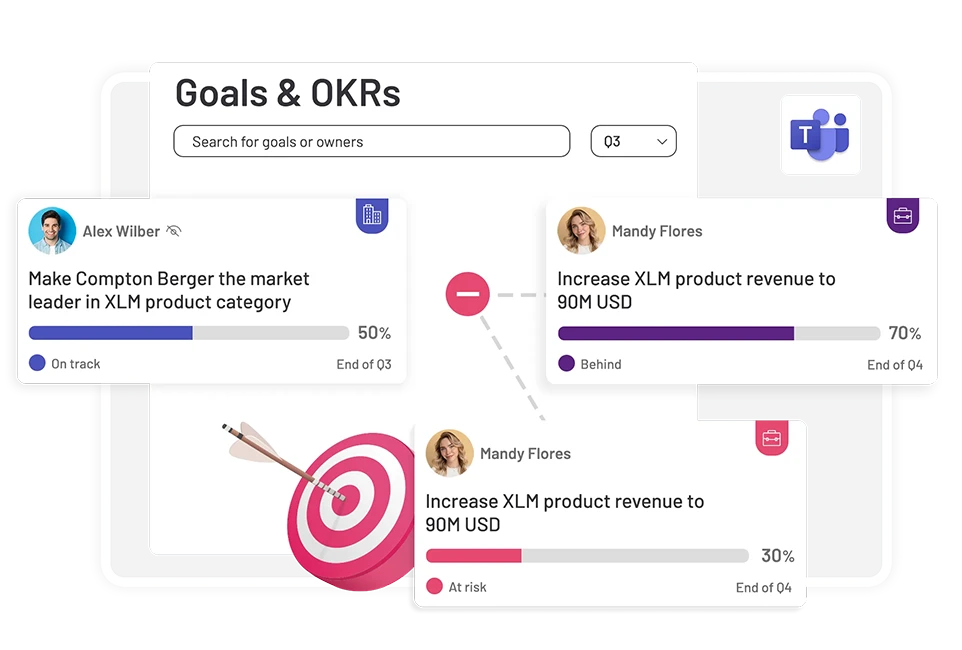Table of Contents
What is the definition of Key Results in OKR Framework?
The term OKR comes from “Objectives and Key Results” and it is one of the most popular frameworks for goal tracking, and it is used by organizations of all sizes.
The OKR definition has been explained by every website under the sun, so let us take a deeper dive into it!
The definition of OKRs has two main components: objectives and key results. Objectives have to be short and well-defined, they are the points that the businesses would like to achieve.
Meanwhile, key results may be more than one per objective and they are advised to be around 2 and 5 per objective.
Key results are the milestones that indicates the required points to achieve your objective. Without key results, it would be difficult to follow a plan or a scheme to reach your objective.
To acknowledge if your key results are the right ones to set for your objective, you can see if you may reach your objective without these key results or not. If you can’t, they are the correct key results to set, however, if you can, they are the wrong ones.
For more information about objectives and key results and how to implement OKRs, you can have a look at this article – How many OKRs should I set for my team?
Difference Between Objective and Key Result
As mentioned above, objectives are the main goals that the businesses would like to accomplish. Meanwhile, they are the small and required points or steps to reach for the objective.
We can define the objective’s question as “Where do I want to go?” and the question of key results are “How do I know if I’m getting there?”. As an OKR best practice, key results should always be defined by using numbers.
If it does not have a number, it is not a key result.
Marissa Mayer – Former CEO of Yahoo
Objectives create a high impact on business plans and they are also time-bound, understandable and inspirational. Key results are more ambitious, measurable and specific but they are also time-bound.
OKRs are required in terms of having a strategic alignment as a business, to have a more focused execution strategy and to engage the employees even more with the company and with their job responsibilities.
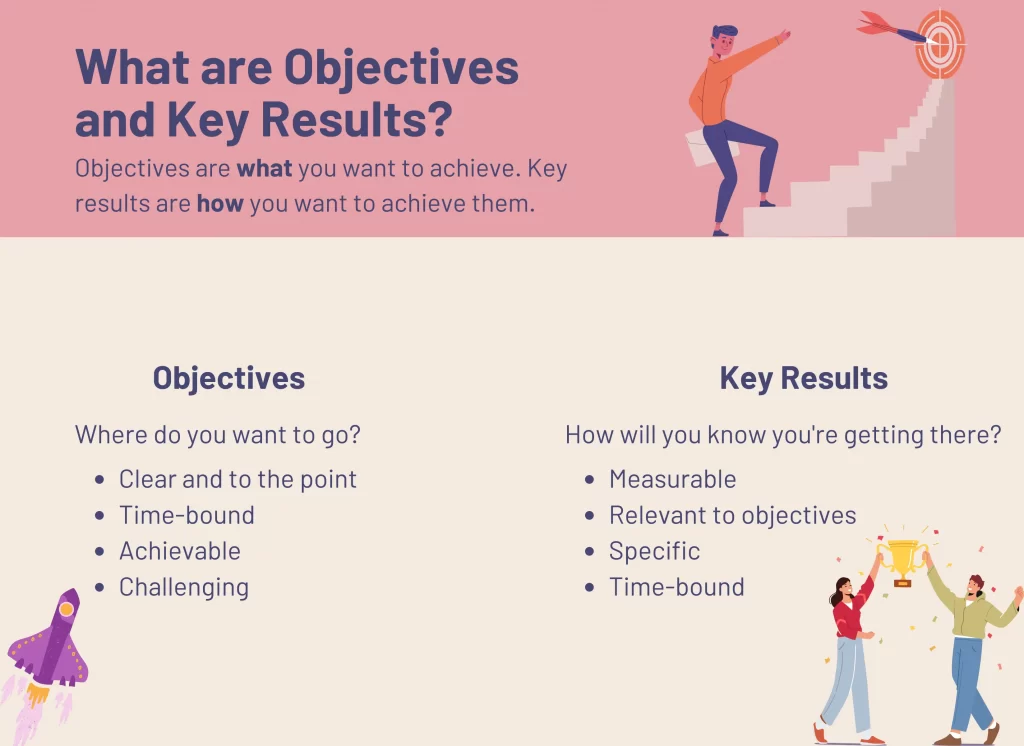
What are the different types of key results?
There are two different types of key results:
- Activity-based: Activity based key results measure the completion of tasks with the activities of employees. To give you some examples: launching a product’s beta version, creation of a new training or implementing a new lead generation campaign .This type of key results generally starts with actionable verbs like launching, releasing, creating and developing.
- Value-based: These key results are measuring the value of delivery from customers or organization. In another saying, they are measured with the successful outcomes. We can define value-based measurements with these kind of examples: improving average weekly visits, increasing open rate, increasing organic traffic to the website or creating an engagement.
Why should your key results be value-based instead of activity-based?
Your OKRs should be value-based instead of activity-based. We know for a fact that OKRs are the success criteria of companies.
In terms of measuring this success correctly, they have to measure if a team or an employee achieved their tasks and fulfilled the results.
To use the OKRs effectively, they can not be based on activities for the following reasons:
- The main purpose is to create a culture which is result-focused, instead of focusing on tasks.
- Whether you complete all the tasks, they are not important if they don’t bring any value to the company or to the employee.
- Action plans and key results are only the path to follow to achieve your objectives.
Value is much more important than activities. If your activities or actions don’t bring any value, they are not the right actions to follow!
Felipe Castro has a very detailed article about this topic.
How can you measure your Key Results inside Microsoft Teams with Teamflect?
Teamflect allows you to measure key results in multiple different ways, right inside Microsoft Teams or Outlook..Here are some of the ways through which Teamflect can help you measure goal and OKR progress.
- Percentage – This is the scenario where the goal or objective is to reach a particular percentage on a metric. For example; increase the website conversion rate to 5%. All the goal owner has to do is update their OKRs in a regular automated check-in and log the percentage data in.
- Value – If the measure of a key result is to increase and decrease a certain value, Teamflect can also help you track that particular metric with ease as well. For example; increasing Twitter follower count from 4.5K to 8K.
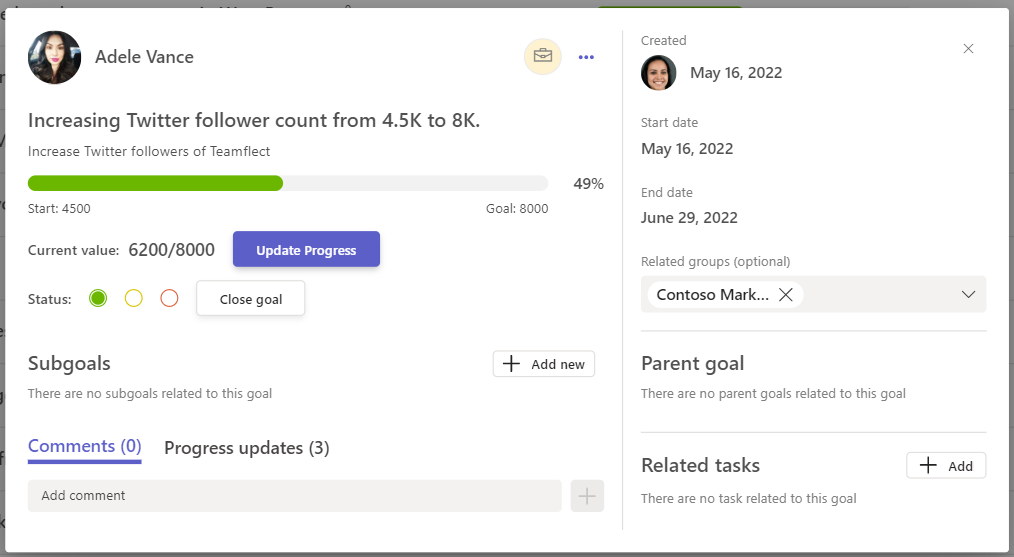
- Currency – Currency is the measuring type if Teamflect measures the key result with a financial value. For example; Increase quarterly revenue to 800K USD in North America and increase the average basket size from 95 USD to 120 USD.
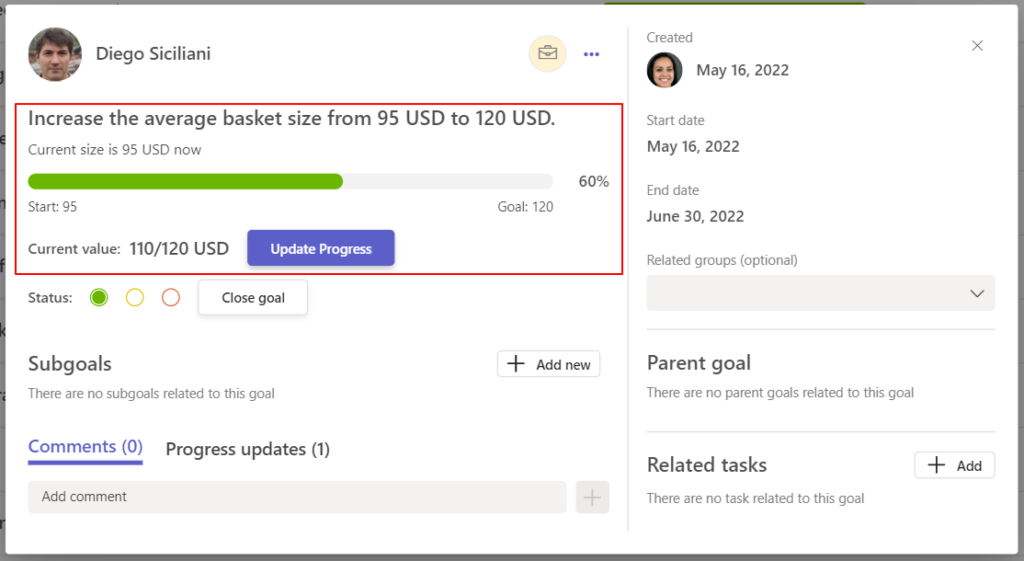
- 0/1 – If the key result can be measured in a binary “Yes” or “No” fashion, Teamflect can help you track it with ease as well. For example: Make Contoso’s app the highest rated application in AppStore, Win XYZ Award.
- Sub-task progress – Sub-task progress measuring is used when a key result is measured dependent on the completion of certain tasks. These are the situations when there are tasks to be completed in order to achieve the objective.
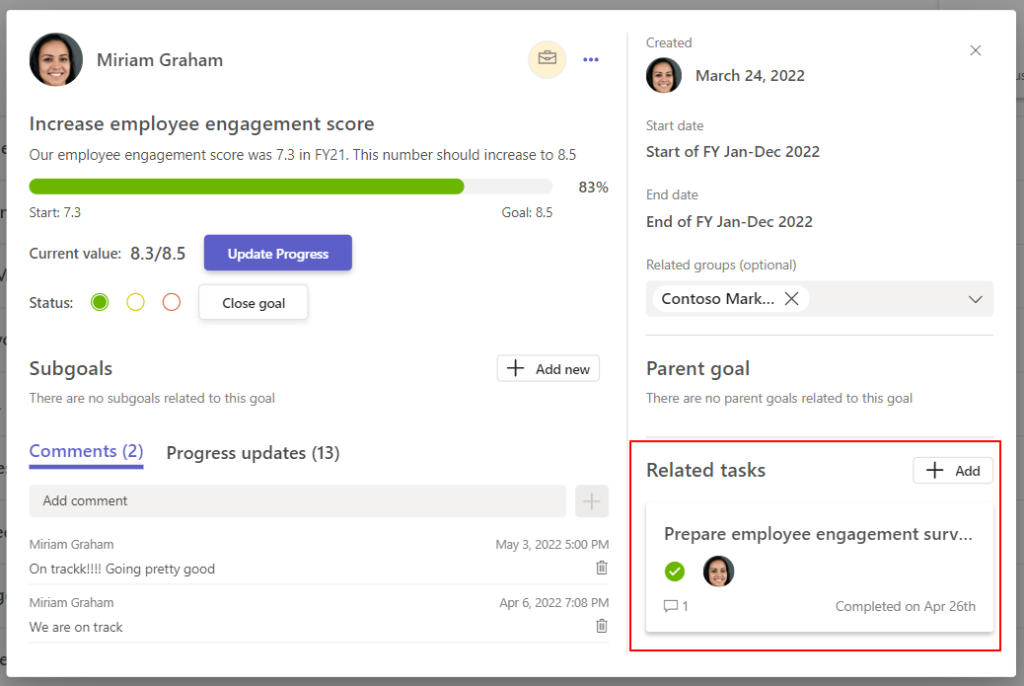
- Sub-goal progress – Sub-goal progress can be used when the parent goal progress should be impacted by the progress of the sub-goals. In this scenario the parent goal only progresses according to the completion rates of the sub-goals. The weight of each sub-goal and how they affect the progression of the main objective can also be adjusted.
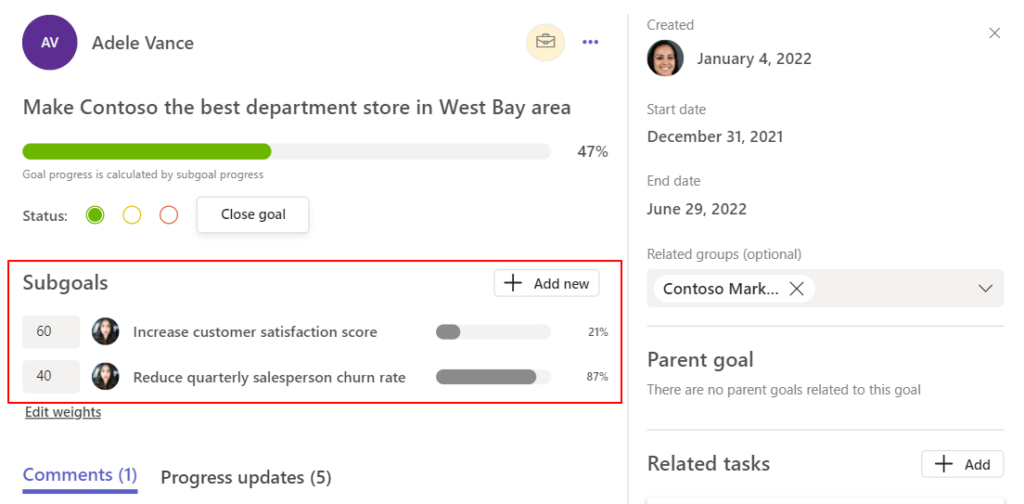
If you’re up for using Teamflect to set and track OKRs, you can watch our video tutorial on the Goals & OKRs module to get the full picture:
